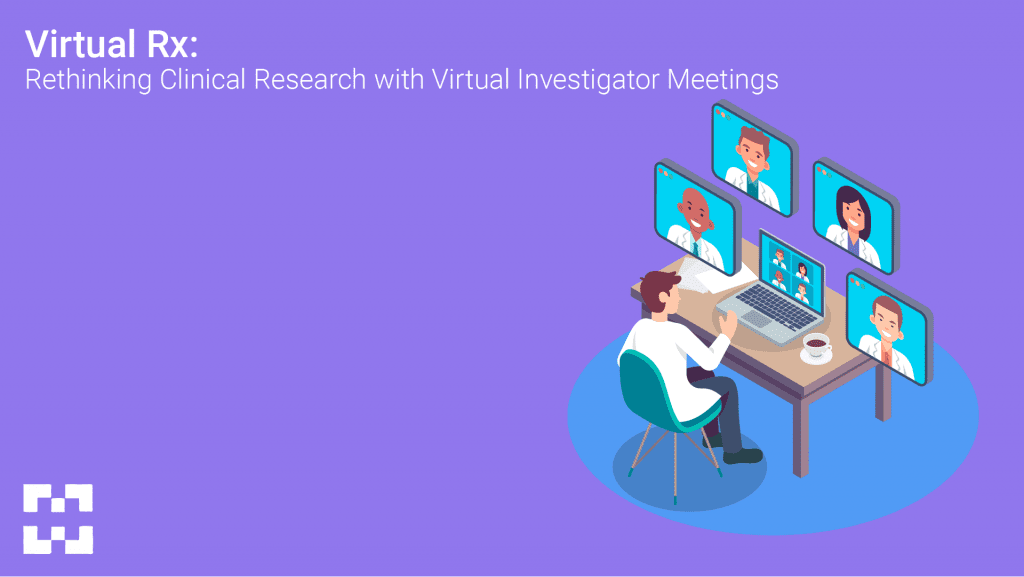
In the dynamic realm of clinical research, investigator meetings have long been a cornerstone, providing a platform for researchers, investigators, and stakeholders to converge, share insights, and collectively shape the trajectory of pivotal studies. Historically, these meetings required physical presence, involving intricate travel logistics and significant time commitments. However, the advent of technology has ushered in a new era, redefining the landscape through virtual investigator meetings. In this blog, we embark on a comprehensive exploration of how this transformation is not merely a shift in format but a game-changing evolution for the world of clinical research.
Breaking Down Geographical Barriers:
Traditional investigator meetings were often constrained by geographical limitations, demanding participants to traverse distances, incurring costs and time commitments. The virtual transformation has shattered these barriers, opening doors for investigators from diverse locations to participate seamlessly, fostering a global collaborative approach that transcends physical boundaries.
Cost-Efficiency and Resource Optimization:
In-person meetings came with a hefty price tag—expenses for travel, accommodation, and venue arrangements. The virtual paradigm, on the other hand, translates to substantial cost savings. Freed from the shackles of physical venues and travel logistics, resources can be redirected toward enhancing the research itself, maximizing the efficiency of clinical study budgets.
Increased Flexibility and Accessibility:
In the traditional landscape, aligning schedules with in-person meetings was a formidable challenge, often requiring meticulous planning. Virtual meetings bring a breath of fresh air with unparalleled flexibility. Participants can now join discussions from the comfort of their own environments, fostering accessibility that transcends time zones and scheduling constraints.
Enhanced Collaboration and Information Sharing:
While in-person meetings offered valuable face-to-face interactions, they were often limited in time and scope. The virtual realm empowers ongoing collaboration, hosting pre-meeting discussions, facilitating real-time resource sharing, and providing a platform for continued engagement post-meeting. This dynamic interaction fosters a sense of community among researchers and investigators.
Innovations in Engagement and Interaction:
Traditional meetings relied on designated Q&A sessions for interaction. Virtual platforms, however, introduce a spectrum of interactive features—live polls, chat functionalities, and breakout sessions—creating a dynamic environment that goes beyond the passive consumption of information. This engagement not only enhances participant experience but also elevates the overall impact of the meeting.
Adaptability to Global Challenges:
External challenges, such as pandemics or travel restrictions, could disrupt or cancel planned investigator meetings. Virtual meetings emerge as a resilient solution, allowing clinical research to persevere even in the face of unforeseen obstacles. This adaptability ensures the continuity and momentum of studies, a critical factor in the ever-evolving landscape of medical research.
Data Security and Compliance:
The physical distribution of materials during in-person meetings required careful handling to ensure compliance and data security. Virtual platforms, designed with robust security measures, provide a secure space for information exchange, maintaining the integrity of sensitive data and upholding compliance standards.
Integration of Multimedia for Comprehensive Training:
Traditional training sessions relied on static presentations. The virtual transformation enables the integration of multimedia elements—videos, animations, and interactive simulations—creating a more comprehensive and engaging training experience for investigators. This dynamic approach to training enhances comprehension and retention of critical study protocols.
Post-Meeting Access to Resources:
Participants traditionally had limited access to meeting materials post-event. Virtual meetings redefine this paradigm, allowing for the easy distribution of recorded sessions, presentations, and supplementary materials. Investigators can revisit information at their convenience, reinforcing their understanding and contributing to a more informed research community.
Measuring and Enhancing Participant Engagement:
Evaluating participant engagement during in-person meetings relied on observational methods. Virtual platforms, on the other hand, provide analytics and data insights. Organizers can measure participant engagement, identify popular sessions, and continuously refine the meeting format for optimal impact. This data-driven approach empowers organizers to enhance future events and tailor content to participant preferences.
Conclusion: Embracing the Future of Clinical Research Meetings
In the grand tapestry of clinical research, the evolution from traditional, in-person investigator meetings to virtual gatherings represents more than just a shift in format. It symbolizes a paradigm shift, a revolution that transcends physical constraints and embraces the future of collaborative medical research. The fusion of technological advancements and scientific collaboration promises a seamless blend, unlocking new possibilities and efficiencies for the advancement of medical research on a global scale. As virtual investigator meetings continue to evolve, they are poised to become an integral and enduring component of the clinical research journey, ushering in an era of unprecedented accessibility, collaboration, and transformative impact.





